by Editor | Sep 20, 2010 | Attractions, Ecotourism
By Elena del Valle, video and photos by Gary Cox
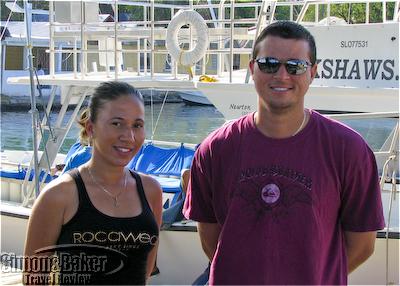
Hackshaws.com is a family run business
We had been crossing our fingers since the night before in the hope of clear skies. We arrived at Vigie Marina just outside Castries, Saint Lucia in the Caribbean a few minutes early excited at the prospect of seeing dolphins or whales. After a brief greeting we boarded the Lady Anne, a 2004 50 foot Newton custom motor boat with capacity for 60 passengers for a Half Day Whale Watch Safari. The two of us, a cheerful crew of three, Captain Antonious, and deck hands Jonny and Ovar, and 21 other passengers departed at 8 a.m. and returned four hours later. With the exception of one young girl we were all adults on board.
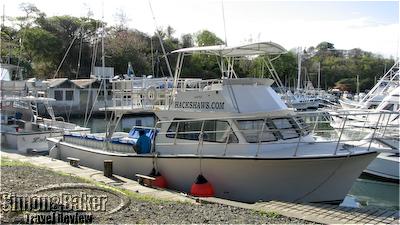
One of two 50 foot custom Newton boats at Hackshaws the day we visited
The crew had a short safety discussion which included a mention of the location of life vests and that there were first aid kits topside and on our deck. They suggested we walk around barefoot and explained there were shady and sunny areas of the boat where we could sit. They also offered us cold soft drinks, mineral water, and rum punch and cheese flavored Pringles potato chips and mentioned there was a small head (bathroom) for guest use.
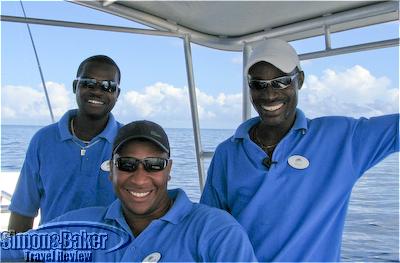
The happy crew of the Lady Anne
Soon the marina was behind us and we began searching for dolphins and whales. Movement caught my eye and when I asked the captain what it was he said it might be whales. As we approached we saw a pod of 20 or more dolphins, I thought. The crew explained that they were pilot whales, dark gray members of the dolphin family measuring 16 to 20 feet and weighing up to three tons, near the surface. They swam under and around us playfully for about 20 minutes. We were delighted to observe them for as long as we could.
A while later, as we hugged the west coast of Saint Lucia heading south we saw spotted dolphins. These were smaller than the pilot whales and perhaps even more playful. These dolphins, found in tropical and warm waters, are said to measure an average of seven feet and weigh about 220 pounds. We remained with them for about 15 minutes, circling back for a final glimpse.
Once the dolphins tired us playing around our boat and swam away we continued south until we reached the famous Gros and Petit pitons. At Jalousie Bay we circled back, observing the hills and The Jalousie Plantation as we turned back north. During the tour we saw the Saint Lucia coast line close up and the profiles of the nearby islands of Saint Vincent and Martinique in the distance.

The famous Saint Lucia Pitons
On our return we made a brief stop in Marigot Bay to drop off two of our passengers before docking back at Vigie Marina. Hackshaw Boat Charters, the tour company that ran our tour, was owned by three Saint Lucia siblings Chris, Jacquie and Nick Hackshaw. Hackshaw Boat Charters, Vigie Marina Castries, Saint Lucia, Telephone (758) 453 0553, Fax (758) 4581250, www.hackshaws.com, sales@hackshaws.com
by Editor | Jun 14, 2010 | Accomodations, Ecotourism, Luxury Travel, New Articles
Photos by Gary Cox
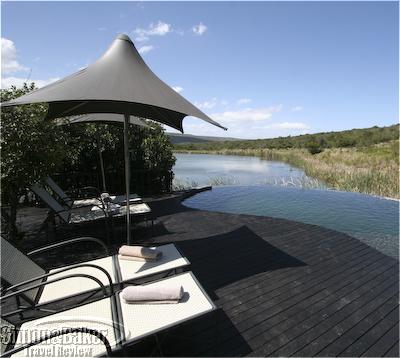
The Kichaka pool and water hole
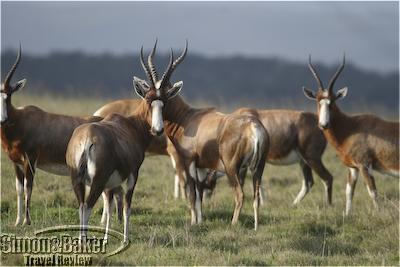
There were two daily game drives at Kichaka
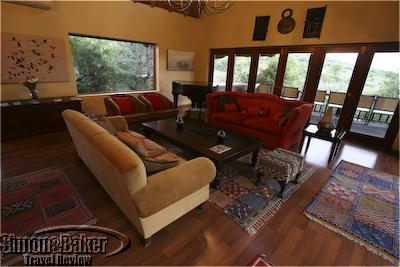
A common area at Kichaka
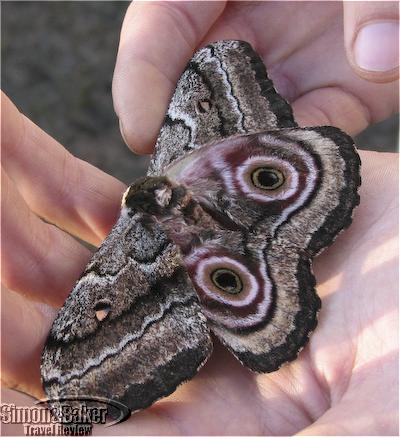
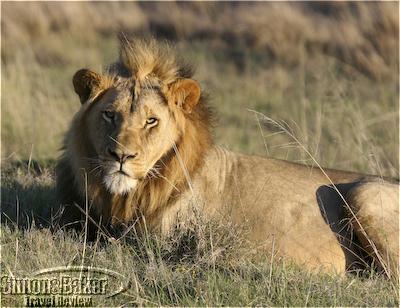
There was game viewing of the small and large varieties at the lodge
Kichaka, an Eastern Cape, South Africa luxury game viewing lodge with 10 suites, offered visitors to the region excellent meals, luxurious suites with lots of privacy and twice daily game drives. Elena and Gary thought it was a great place for a romantic getaway and for visitors to South Africa’s Wine Route wishing to get a taste of game viewing in a luxury environment. Click here to read our team’s detailed article about the Kichaka Luxury Game Lodge.
by Editor | May 24, 2010 | Accomodations, Ecotourism
Photos by Gary Cox
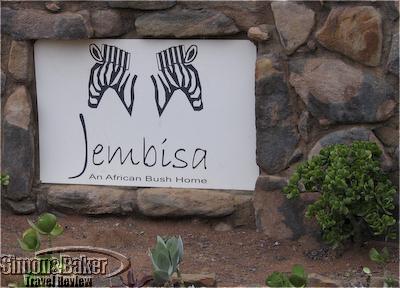
A welcome sign

Dung beetles
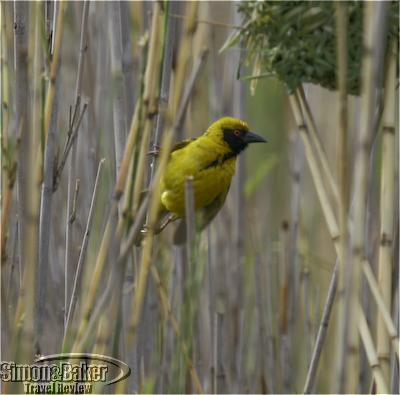
Bird spotting and identification was a common way to enjoy game drives
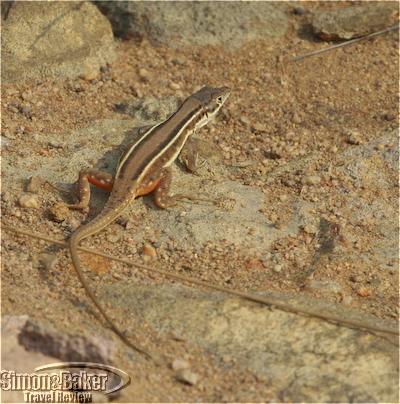
At Jembisa there was time to observe the little creatures too
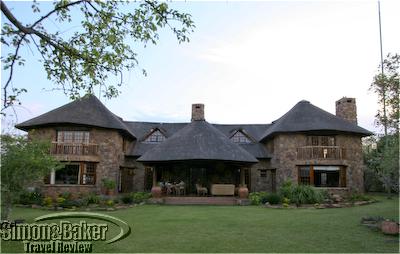
A view from the gardens of the back of Jembisa
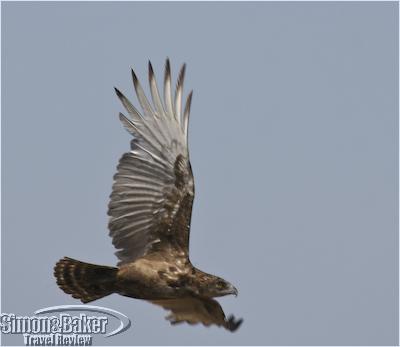
A predator with wings
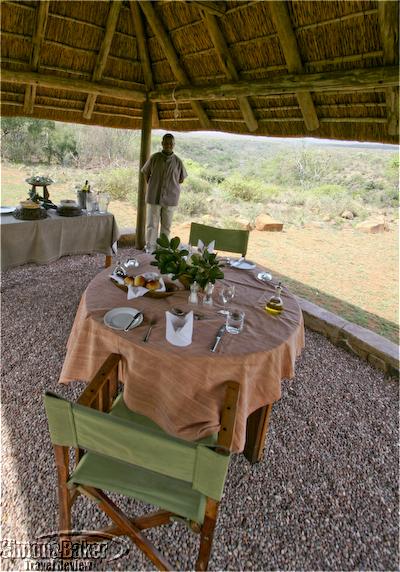
A tasty lunch with a bush view at Jembisa
Jembisa, a private rental home with staff within a bush reserve, is in South Africa’s Waterberg region a short drive from Johannesburg. During our team’s stay at the former family home they focused on the charms, large and small, of bush living. They spent their days relaxing in the comfortable six-bedroom exclusive use house, playing with one of three resident dogs, going for a stroll, enjoying a home cooked meal made by local staff and exploring the plant and animal life in the area during guided game drives with their enthusiastic guide. Click here to read about our team’s impressions of Jembisa.
by Editor | May 17, 2010 | Accomodations, Ecotourism, New Articles
Article and photos by Josette King
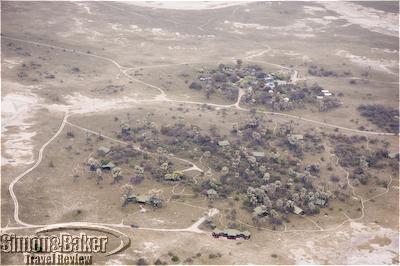
Jack's Camp was an oasis of luxury in the Kalahari
With my recent visit to Botswana came the opportunity to explore some of the many faces of the Kalahari Desert. Derived from the Setswana word kgalagadi usually interpreted as “the great thirst,” or “thirstland,” the Kalahari is a mantle of sand that covers roughly 70 percent of the country. My Kalahari experience began with a bush plane flight from Maun, the main gateway to Bostwana’s safari areas. For almost an hour, the plane droned on and the sun-baked emptiness below never seemed to change. Then suddenly the swirling horizon of dusty sandbars and gleaming salt pans was interrupted by an incongruous line of fan palm trees. “Jack’s Camp,” the pilot announced with a nudge in the direction of the palms.
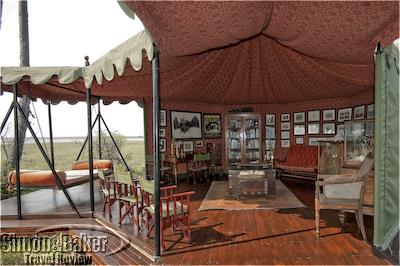
The library at Jack's Camp
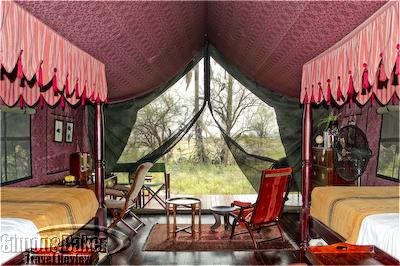
My tent had a view of the Makgadikgadi Salt Pans
Located in a remote oasis overlooking the Makgadikgadi Salt Pans, Jack’s Camp was a magical place reminiscent of the grand East African safaris camps of a bygone area. The spacious tents were decorated with antique furniture and oriental rugs, their interior draped with faded chintz and their en-suite bathrooms featuring indoor and outdoor showers with flawlessly polished copper fixtures. Service was commensurate with the elegance of the camp. But the superb accommodations and service were but a prelude to the outstanding quality and variety of activities provided by the expert guiding staff of Jack’s Camp.

A meerkat emerges from its burrow
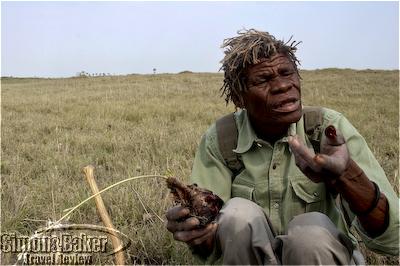
A nature walk with Cobra, a Zu/’hoasi bushman elder
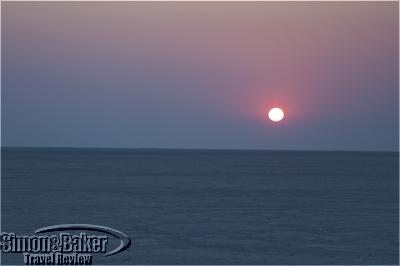
The sun sets over the Makgadikgadi Salt Pans
I spent a delightful morning standing among a colony of meerkats (although wild, these squirrel-sized mongooses were sufficiently habituated to humans that they were unconcerned by my presence). I marveled at the daily sight of hundreds of zebras and wildebeests arriving from the Boteti River to the west for their yearly migration to the Makgadikgadi Salt Pans. I went on a nature walk with a Zu/’hoasi bushman elder who showed me the plants that had ensured the survival of his ancestors for millennia. I rode a quad bike ride deep into the Pans to watch the sun set and the moon rise over their blistered infinity. Click here to read more about the many unique experiences of my stay at Jack’s Camp.
by Editor | May 10, 2010 | Accomodations, Ecotourism, New Articles
Article by Elena del Valle and photos by Juan Cooper

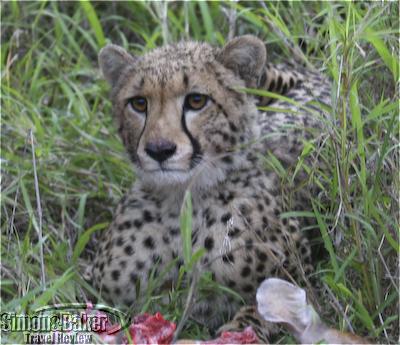
We saw lion several times and cheetah once during our stay
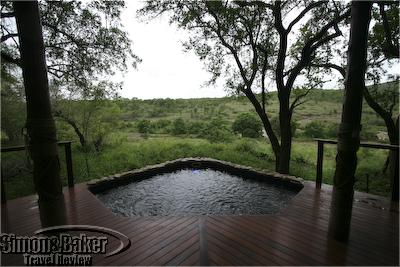
The Jacuzzi at my luxury one bedroom suite
We enjoyed good game viewing and many of the luxury features of Amakhosi Safari Lodge, a family friendly property with minimal malaria risk in South Africa’s KwaZulu Natal region. Although this area of the country, located near Durban in the east, has not been well known by safari oriented international visitors in the past this may change in 2010 with the added traffic from the FIFA World Cup games.

A few minutes walk down the main path led to my quiet and very private honeymoon suite
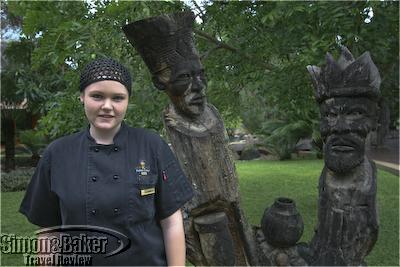
We much enjoyed the creations of the lodge’s young chef and her team
The lodge faced the Mkuse River, affording guests river fronting meals and accommodations in spacious suites with a water view. We liked the friendly and service oriented staff, gourmet meals and snacks, good game viewing, and lovely river facing honeymoon suite with private Jacuzzi plunge pool and riverside deck. Click here to read about our visit to Amakhosi.
by Editor | Apr 26, 2010 | Accomodations, Ecotourism, New Articles
Article and photos by Josette King

Thamalakane River Lodge lounge
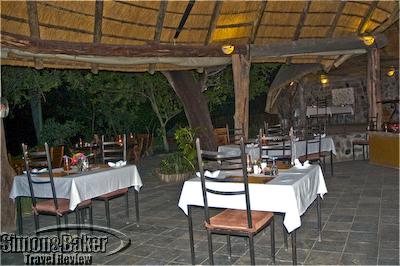
Thalamakane River Lodge dining room
As the gateway to the main safari areas in Botswana, Maun is often referred to as the tourism capital of the country. Its busy airport brings in passenger planes filled with tourists, most of whom are efficiently greeted at the exit gate by personnel from the various safari companies operating in the Okavango Delta and the Kalahari Desert. They are then handed over to the charter flight operators who take them to their ultimate bush destination. The same friendly greeters are there on the return to make sure that “their” tourists get on the correct flight to begin their journey home. That’s all most safari travelers see of Maun. For those who venture outside the airport grounds, the colorful chaos of an African boomtown awaits. The large African village that has been, for almost a century, the tribal capital of the BaTawana people (a predominantly pastoral society) and hub of the local cattle ranching industry, is morphing into a dynamic 21st century town.
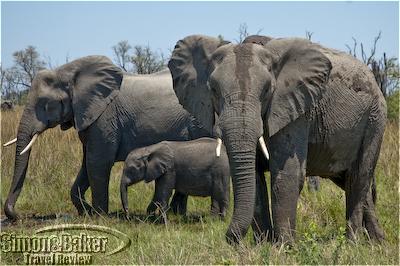
Elephants abound in the nearby Moremi Game Reserve
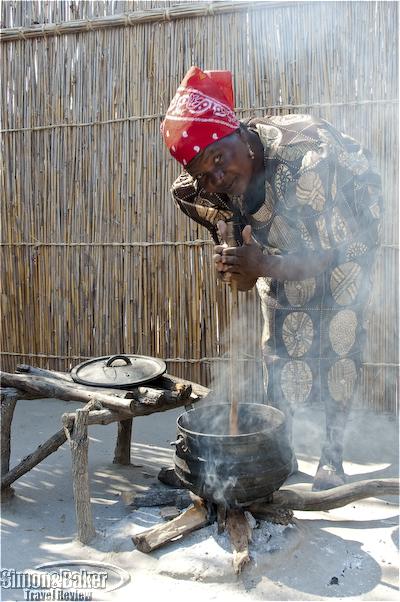
A Bayei tribeswoman prepares a traditional dish
In that still mainly roadless country the size of France, the broad, newly paved road that crosses the town on its northeastern way to the Moremi Game Reserve is a major lifeline. It is lined with new buildings freshly stuccoed in creamy shades of fruit sorbets. These are the offices of the numerous safari and air-charter operations that run trips into the Okavango Delta; or small strip malls catering to tourists, now the town’s main source of revenue. Flashy four-wheel drive vehicles zip through the bustling crowd. However, a few blocks in any direction from the airport and town center, the traditional southern African circular rondavels under peaked thatched roofs still hold their ground. Donkeys quickly become a primary means of transportation along the dusty dirt paths; and an invasion of goats stubbornly insist on their right of way.
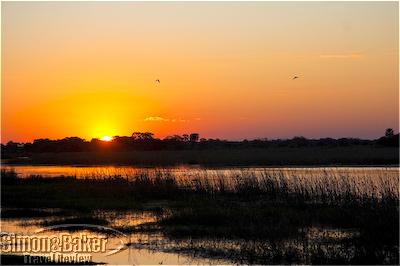
Sunset on the Thamalakane River
Around town and along the banks of the nearby Thamalakane River, a number of lodging options have developed to cater to visitors. There are mainly camp grounds or efficiency facilities for self-drivers, the hardy souls who rent four-wheel drive cars and set out on their own to explore the nearby game areas. Then, for the not-so-hardy souls who feel more at ease exploring in the company of an experienced safari guide, and like a lovely abode filled with creature comforts to welcome them at the end of the day, there is the Thamalakane River Lodge. I unabashedly declare myself in the latter category of travelers, and I thoroughly enjoyed my stay at the lodge.
Ideally located an easy 20-minute drive from Maun Airport, Thamalakane River Lodge was a secluded haven of tranquility nestled in a grove of mature riverine trees on a bank of the river. My well-appointed stone and thatch guest chalet had a private veranda with a sweeping view of the river, as did the main lodge. The dining room offered a varied à-la-carte menu of well-prepared dishes. The staff was warm and attentive. It was a delightful place to come home to after days spent visiting the Moremi Game Reserve or the watery world of the Okavango flood plain. Click here to read more about my visit the southern-most part of the Okavango Delta and the Thamalakane River Lodge.







































